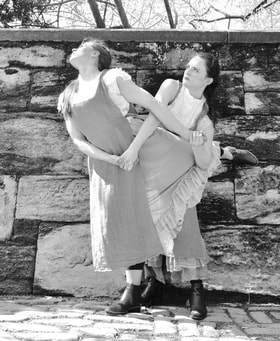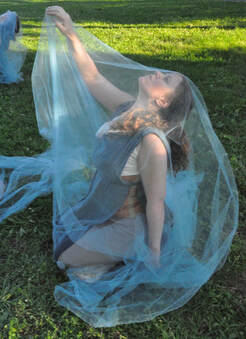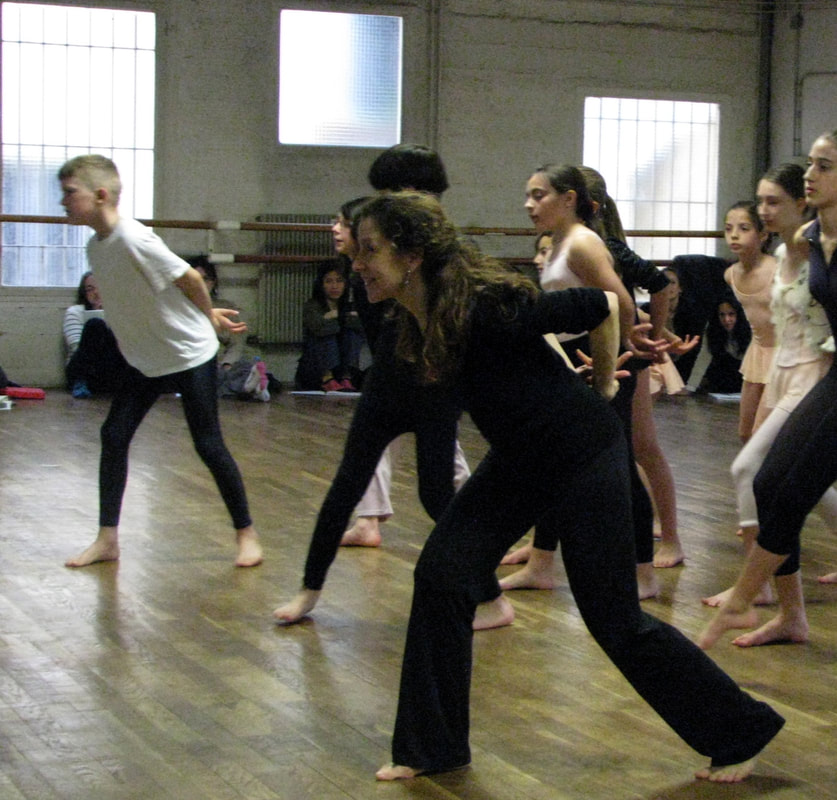News & Upcoming Catherine Gallant/DANCE
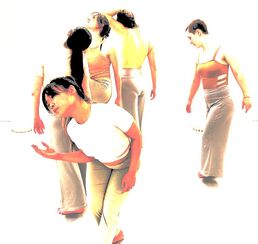
Catherine Gallant/DANCE will perform Late Echo on the December 3rd program of the American Dance Guild at the Ailey Citicorp Theater, 8pm. Ticket link here.
Late Echo Promo video
Dancers: Rebecca Seow, Kathleen Caragine, Rosy Gentle and Colleen Edwards
Choreography: Catherine Gallant (2022)
Late Echo was originally commissioned by Dances We Dance for their June 2022 season.
Late Echo, is a work for four dancers. The choreography gleans images from John Ashbury’s 1979 poem, Late Echo. The dance looks slowly and closely at the minute reflections in nature’s eye, moving our “chronic inattention” to aliveness as the movement shifts and drifts between the dancers, the projected video images and the space.
Catherine Gallant/DANCE will perform Late Echo on the December 3rd program of the American Dance Guild at the Ailey Citicorp Theater, 8pm. Ticket link here.
Late Echo Promo video
Dancers: Rebecca Seow, Kathleen Caragine, Rosy Gentle and Colleen Edwards
Choreography: Catherine Gallant (2022)
Late Echo was originally commissioned by Dances We Dance for their June 2022 season.
Late Echo, is a work for four dancers. The choreography gleans images from John Ashbury’s 1979 poem, Late Echo. The dance looks slowly and closely at the minute reflections in nature’s eye, moving our “chronic inattention” to aliveness as the movement shifts and drifts between the dancers, the projected video images and the space.
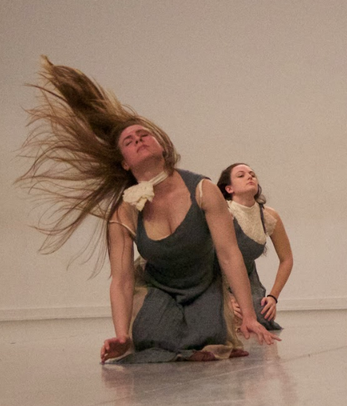
Catherine Gallant/DANCE
Escape from the House of Mercy
December 18 and 19, 2021 at 7:00pm
St. Michael's Church, 225 West 99th St. (at Amsterdam Ave.)
CATHERINE GALLANT/DANCE presents a long awaited indoor performance of Escape from the House of Mercy, which embodies the ongoing struggle for gender equity and stares in the face of deceptive and impassive authority. This 21st century women's view of our social/cultural systems measures both ground gained and distance yet to be traveled.
Abra Cohen, Erica Lessner, Cecly Placenti, Kelli Chapman, Megan Minturn, Halley Gerstel, Jessie King, Charlotte Hendrickson and Catherine Gallant
Costumes: Ivana Drazic
photo: Corinne Shearer
Escape from the House of Mercy
December 18 and 19, 2021 at 7:00pm
St. Michael's Church, 225 West 99th St. (at Amsterdam Ave.)
CATHERINE GALLANT/DANCE presents a long awaited indoor performance of Escape from the House of Mercy, which embodies the ongoing struggle for gender equity and stares in the face of deceptive and impassive authority. This 21st century women's view of our social/cultural systems measures both ground gained and distance yet to be traveled.
Abra Cohen, Erica Lessner, Cecly Placenti, Kelli Chapman, Megan Minturn, Halley Gerstel, Jessie King, Charlotte Hendrickson and Catherine Gallant
Costumes: Ivana Drazic
photo: Corinne Shearer
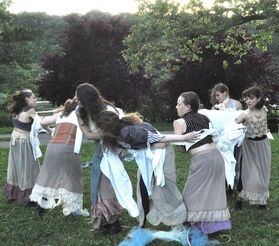
Escape from the House of Mercy is inspired by the infamous institution from the turn of the 20th century once located in Inwood Hill Park in Upper Manhattan, NYC. We began with funding through Partnerships for Parks to research and develop a site-specific work for Inwood Hill Park that references ideas and questions about social stratification, confinement and isolation, rehabilitation, work, poverty and homelessness. Using a combination of choreographic episodes and a sound score which shifts in tone from bombastic to soothing,
The House of Mercy was a home for “abandoned and troubled women”, in fact, it was closer to a prison or workhouse to which most inhabitants were brought against their wills. Here a young woman could be locked up for years for an offense such as dancing in public or walking alone at night. Inhabitants were routinely punished with gags to the mouth, starvation diets, and leg irons. This inhumane and demoralizing treatment, in the guise of rehabilitation, was part of an era when the rights of the poor, especially women, were completely denied. Related institutions in NYC included the Magdeline Asylum (part of the Magdeline Laundry system run by the Catholic Church in both Ireland and the US) and the House of Rest for tuberculosis patients. Why are these now invisible places from the past important in the present? How is honest self-expression still punished in our own time? Mining the persistent feelings of vulnerability and powerlessness in the face of deceptive and impassive authority, Escape from the House of Mercy was created through improvisation, score building, personal histories, poetry, literary references and vocalization/singing to integrate an embodied connection to women's history.
The House of Mercy was a home for “abandoned and troubled women”, in fact, it was closer to a prison or workhouse to which most inhabitants were brought against their wills. Here a young woman could be locked up for years for an offense such as dancing in public or walking alone at night. Inhabitants were routinely punished with gags to the mouth, starvation diets, and leg irons. This inhumane and demoralizing treatment, in the guise of rehabilitation, was part of an era when the rights of the poor, especially women, were completely denied. Related institutions in NYC included the Magdeline Asylum (part of the Magdeline Laundry system run by the Catholic Church in both Ireland and the US) and the House of Rest for tuberculosis patients. Why are these now invisible places from the past important in the present? How is honest self-expression still punished in our own time? Mining the persistent feelings of vulnerability and powerlessness in the face of deceptive and impassive authority, Escape from the House of Mercy was created through improvisation, score building, personal histories, poetry, literary references and vocalization/singing to integrate an embodied connection to women's history.
